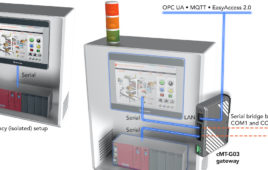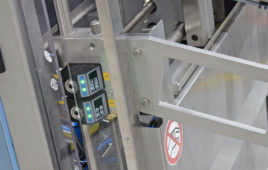In a paper presented today at the Association for Computing Machinery’s special interest group on data communication (SIGCOMM) conference in Florianópolis, Brazil, a team of computer science researchers at the University of Massachusetts Amherst led by professor Deepak Ganesan introduced a new radio technology that allows small mobile devices to take advantage of battery power in larger devices nearby for communication.
Ganesan and his graduate students in the College of Information and Computer Sciences, Pan Hu, Pengyu Zhang and Mohammad Rostami, designed and are testing a prototype radio that could help to extend the life of batteries in small, mass-market mobile devices such as fitness trackers and smartwatches. They hope using “energy offload” techniques may help to make these devices smaller and lighter in the future.
Ganesan and colleagues have dubbed the new technology Braidio for “braid of radios,” and say it can extend battery life hundreds of times in some cases.
As he explains, battery size in portable devices is proportional to their size. The larger the device, the larger its battery; a laptop battery is roughly a thousand times larger than one in a fitness tracker, a hundred times larger than in a smartwatch, and 10 times larger than in a cell phone. However, these devices can’t take advantage of the differences. For example, Ganesan says, “the battery on your smart watch cannot survive longer by taking advantage of the higher battery level on your smartphone.”
“We take for granted the ability to offload storage and computation from our relatively limited personal computers to the resource-rich cloud,” he adds. “In the same vein, it makes sense that devices should also be able to offload how much power they consume for communication to devices that have more energy.”
In the paper presented today, to be published in the conference proceedings, the researchers show that they have made strides toward fixing this problem, designing a radio that has the ability to offload energy to larger devices nearby and, in effect, making both device size and battery consumption proportional to the size of battery.
To achieve this, they embellished Bluetooth, a commonly-used radio technology, with the ability to operate in a similar manner to radio-frequency identification (RFID), which operates asymmetrically. That is, a reader does most of the work and pays the majority of the energy cost of communication, while a tag, typically embedded in a smaller device or object, is extremely power-efficient.
Braidio operates like a standard Bluetooth radio when a device has sufficient energy, but operates like RFID when energy is low, offloading energy use to a device with a larger battery when needed. So, when a smartwatch and smartphone are equipped with Braidios, they can work together to proportionally share the energy consumed for communication, they explain.
Hu says their Braidio test results show that when a device with a small battery is transmitting to a device with large battery, Braidio can offer roughly 400 times longer battery life than Bluetooth, since the smaller device’s battery is preserved longer.
“To be clear, our results only cover the cost of communication or transmitting data,” Hu adds. “If a radio is transmitting from a camera that consumes hundreds of milliwatts while using its sensor, clearly the sensors may dominate total power consumption and reduce the benefits of optimizing the radio.”
The team designed Braidio’s radio frequency front end so that it could operate in different modes while consuming power comparable to a Bluetooth radio and using simple, low-cost components. They also designed algorithms that monitor the channel and energy at the transmitter and receiver and switch dynamically between modes to accomplish power-proportional communication without sacrificing throughput. With further optimization, the researchers believe Braidio or similar radios can be made smaller and more efficient for mass-market needs.
Ganesan says that technologies like Braidio open up a new way of thinking about the design of mobile and wearable devices. “Wearable devices are often bulky due to large batteries needed for adequate battery life,” he says. “Perhaps such energy offload techniques can reverse this trend and enable thinner and lighter devices.”
Filed Under: M2M (machine to machine)




